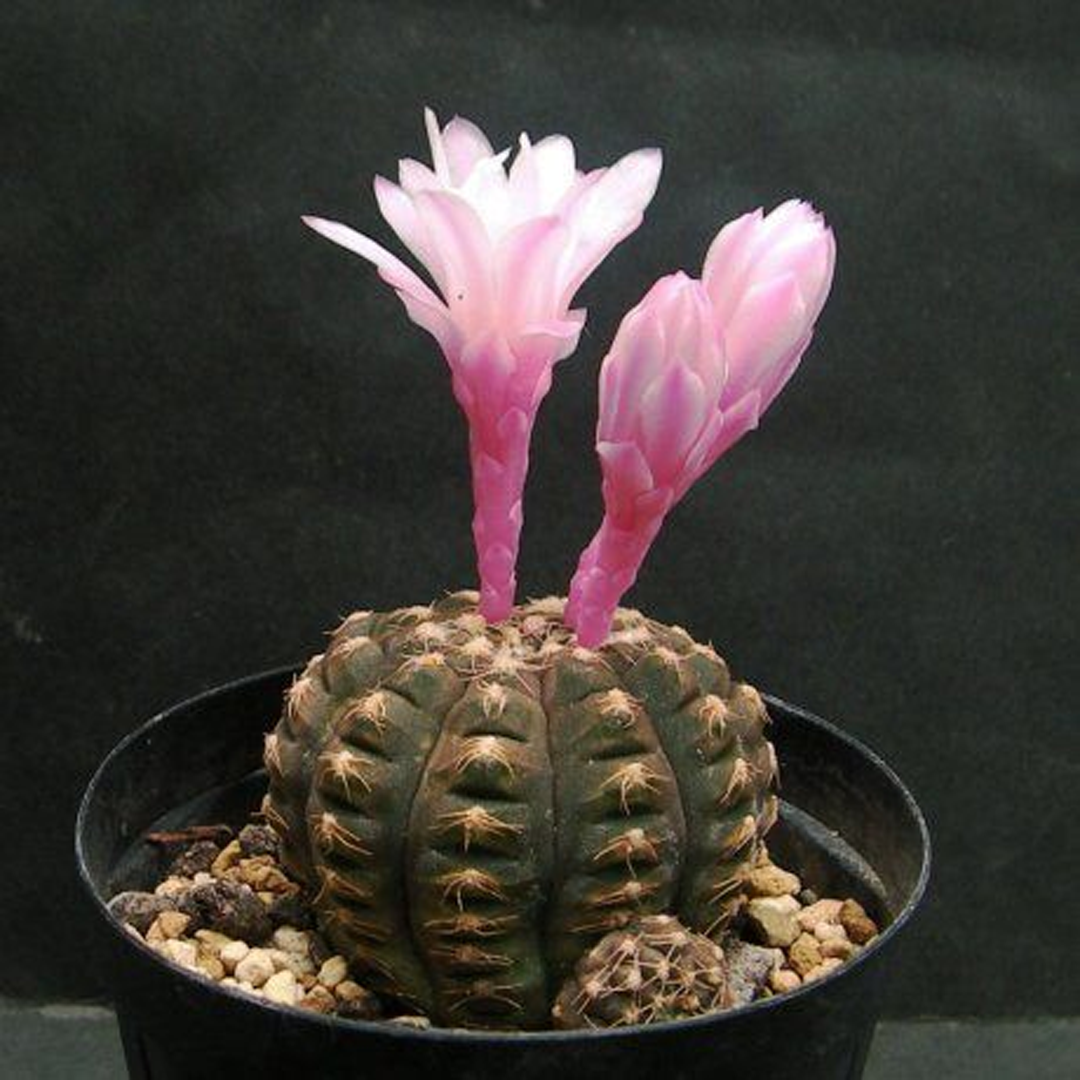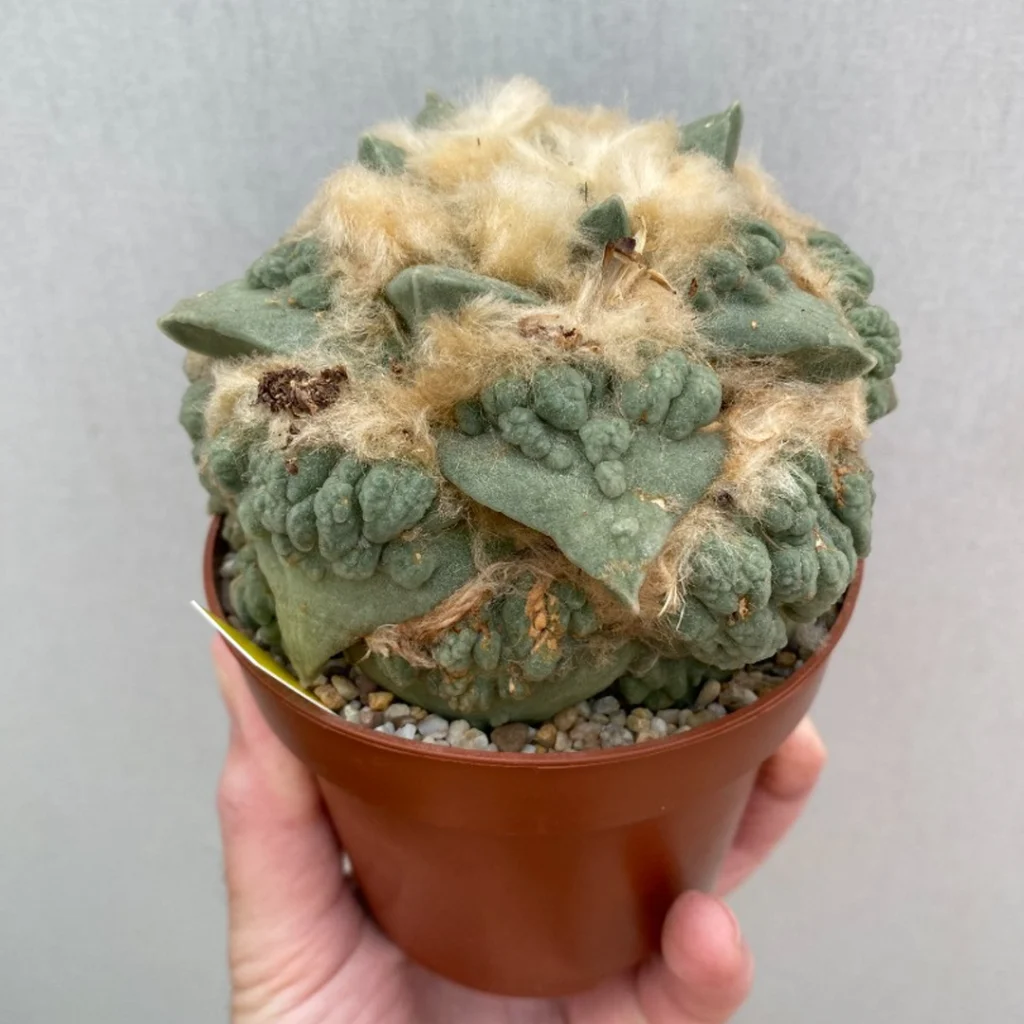Gymnocalycium ragonesei variegated is a captivating variant of the Gymnocalycium ragonesei species, celebrated for its unique variegation and compact, globular form. Native to the arid regions of Argentina, this small cactus exhibits a smooth, round body adorned with striking shades of yellow, cream, and green, creating a mesmerizing contrast against its subtle ribbing.
This species is a slow grower, often reaching a diameter of just a few centimeters. Despite its small size, it makes a bold statement in any cactus collection. During its blooming season, the cactus produces delicate, funnel-shaped white or pale pink flowers, enhancing its visual appeal.
How to Care
- Light: Prefers bright, indirect sunlight. Avoid direct sunlight for prolonged periods to prevent sunburn on the variegated areas.
- Watering: Water sparingly, ensuring the soil dries out completely between watering. Reduce watering significantly during winter.
- Soil: Use a well-draining cactus mix with added sand or perlite to prevent water retention.
- Temperature: Thrives in temperatures between 18°C to 30°C (65°F to 86°F). Protect from frost; keep above 10°C (50°F).
- Fertilizer: Apply a diluted cactus fertilizer during the growing season (spring and summer). Fertilize sparingly to maintain its variegation.
- Repotting: Repot every 3-5 years or when necessary, using care to avoid damaging the delicate roots.
- Propagation: Propagation is primarily by seeds; maintaining variegation through propagation is rare and challenging.

























